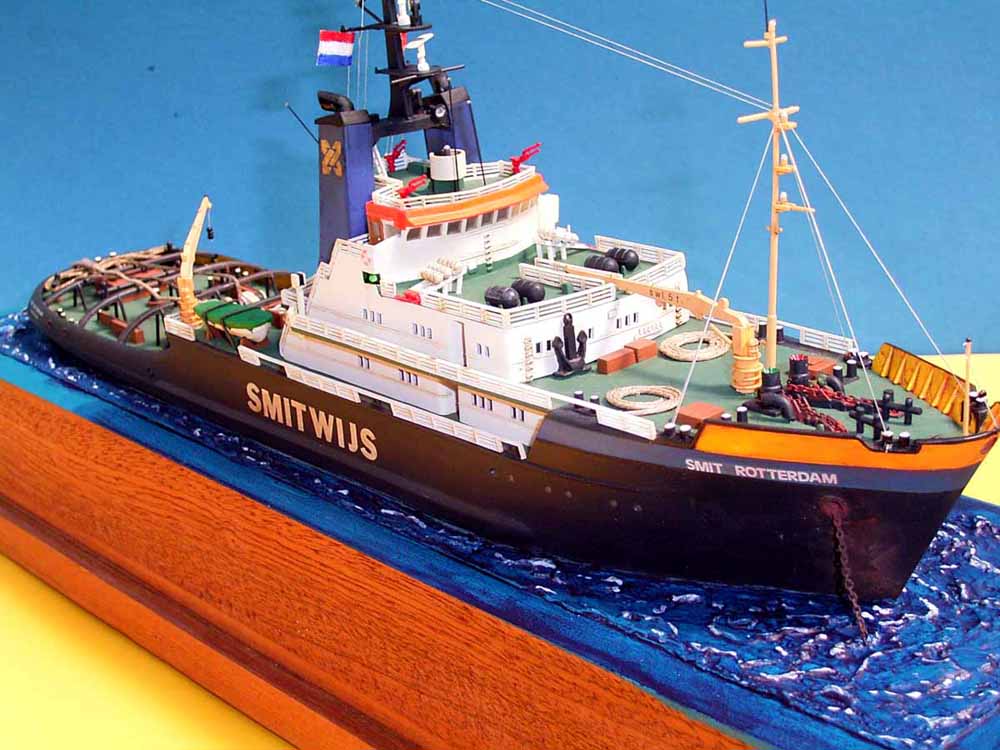by Derek Derks

1/200 Smit Rotterdam (Heller)

In the late sixties and early seventies, it became obvious that the existing generation of sea going tugs would not be able to handle the enormous sized tankers and bulkcarriers. Besides this, there was also the construction of gigantic concrete and steel production platforms for the oil industry.
In January 1974, the directors of Smit International (Rotterdam), made the decision to have two super tugs built. They were to have 22,000 Indicator Horse Power (IHP) and that made them at that moment, the two strongest operating tugs in the world.
The order to build these two powerful tugs went to Shipyard & Machine Factory “De Merwede” in the Netherlands.
Total displacement was 2,273 tons. Length 74.38 m, width 15.78 m, depth 7.60 m. “Stork-Werkspoor” 410 4 tew 9 cylinder diesel engines. They were each connected to a four blade adjustable screw.
April 1975, the “Smit Rotterdam” was operational and its first task was to tow the 350,000 tons production platform “BERYL-A” from Stavanger (Norway) to a location in the North Sea. It needs to be mentioned that this job was performed together with the Super Tugs “Noordzee” (11,000 HP), Bugsier tugs “Wotan and “Atlantic”, each 12,.500 HP, and the “Pacific” 10,000 HP. In total, 42,000 HP was pulling the “BERYL-A” to the final destination.
In 1991, the Smit International and the Wijsmuller company merged into “SMITWIJS Towage C.V”.
This 1/200 scale model is value for money. It was built out of the box with no problems whatsoever. Fitting is good and the color scheme turns this “modern” tug into a rather beautiful lined ship. I used Humbrol paints. The ship was fixed, full hull, into a kind of wooden dock. The anchor chain on starboard side was lowered. After this, the dock was flooded with a mixture of molding powder (2/3) and water (1/3). After shrinking, this was repeated to the desired level.. The small waves can be easily created from the molding powder . My wife Carroll, painted the sea structure with Talens Hobbycolors.
At anchor in Barbados. Waiting anxiously for the next job. Ropes and steel cables, connected together to give the desired stretch, ready to hand out on the deck.
Although distress calls are not so common anymore; if sent, then “all hell breaks lose”. The tug arriving first on the scene can secure the “No Cure-No Pay” contract. This means in short that if the ship in distress will be saved a certain percentage of the total value (including cargo) will be paid out to the company and the crew. Tugs from other companies that will assist in the salvage operation will be under conditions from the leading tug company.
Present day reality shows that these super tugs are mainly tasked in the oil industry with the movement of their heavy production equipment.
Photographs taken with a simple Ricoh Caplio G4 Wide
